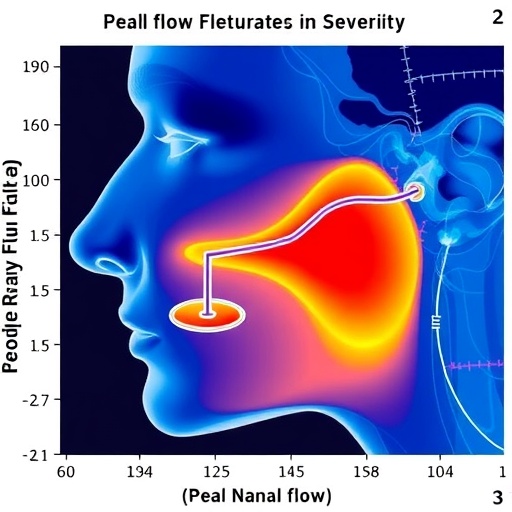It would decrease the levels of NOx and soot by 92% and 88% respectively, and the CO2 emissions from the exhaust pipe by 15%

Credit: CMT-Motores Térmicos UPV
The results of the first theorical-experimental tests are conclusive: compared to diesel, the technology proposed by the CMT-Thermal Engines researchers of the UPV decreases the levels of NOx and soot by 92% and 88% respectively, and CO2 emissions from the exhaust pipe by 15% – down to 52 g/tkm (gram per tonne and kilometre) -, thus getting ahead of the demanding anti-contamination regulation approved for 2025. These results have been published in the journal Energy Conversion and Management.
“The goal of the study was to assess the technical-economical potential of parallel hybrid technology applied alongside dual-fuel technology as an alternative to pure electrification in order to achieve a drastic decrease in CO2 emissions required by 2025 – in five years, these lorries must emit 15% less carbon dioxide. And the figures we have obtained, both for carbon dioxide and some of the other most harmful contaminating agents from combustion engines, have been very positive,” highlights Antonio García, full professor at the UPV and researcher at CMT-Thermal Engines.
Along with the CMT-Thermal Engines group of the UPV, companies Volvo Group Trucks Technology (France) and Aramco Overseas Company (France), which CMT-Thermal Engines has worked with for over a decade, have also taken part in the study.
Maximum efficiency, less contamination
Uniting both technologies, dual-fuel combustion and a hybrid structure, makes it possible to maximise the benefits of both of them. “Electrical assistance prevents the use of the thermal engine in low-efficiency conditions. At the same time, the addition of the thermal engine in the full system makes it possible to obtain economically-viable vehicles compared to the purely electrical and relatively clean ones,” says Antonio García.
The CMT-Thermal Engines researcher stresses that the dual-fuel parallel hybrid combustion technology makes it possible to decrease NOx emissions by over 90% compared to Diesel, with almost zero soot. Furthermore, optimisation of the electrical components allows the thermal engine to work in its areas of highest performance, with 13% less fuel consumption than a conventional diesel vehicle.
“As well as this proposal for a new engine, we are working on the use of alternative fuels, such a e-fuels, to maximise the benefit of this technology in terms of the analysis of the lifecycle of CO2, thus thinking ahead for possible changes in the upcoming regulation,” says García.
Mathematical models are key
Santiago Martínez, researcher at the CMT-Thermal Engines of the UPV highlights the importance of computer simulations in the task of sizing the different electrical components to use them in a parallel hybrid structure together with the dual-fuel combustion system. In this sense, the numerical simulation has been one of the pillars in order to achieve the results of the study in a relatively short period of time.
“For this study, a virtual model of the original vehicle was created with a conventional diesel mechanism, and it was validated by making use of experimental data obtained from the lorry by company Volvo. Afterwards, we conducted the optimisation of the different electrical components such as the engine, generator and battery, taking into account the real driving cycles in which the lorry would conduct its activity. This methodology makes it possible to decrease the amount of experimental trials by a large amount, and therefore also the cost of developing any given technology,” highlights Martínez.
Which battery would be the most efficient?
Furthermore, Javier Monsalve, another member of the CMT-Thermal Engines team, explains that in order to determine the potential of this technology compared to current technology, its cost must be evaluated taking into account two main factors. On one hand, the price of the batteries, and on the other, the possible savings in terms of penalisation for an excess of CO2 emissions. In this sense, in their analysis, the researchers took into account the current price of the batteries (approx. €176/kWh) as well as their estimated cost in 2025 (approx. €100/kWh), as well as the economical penalty enforced on lorry manufacturers if they do not respect the CO2 limit in 2025, which will be €4,250 per g/tkm.
“Taking into account the current price of the batteries and the penalties proposed by the European Union for 2025, the dual-fuel technology for lorries between 18 and 25 tonnes has the best benefits when using small-capacity batteries (up to 10kWh). The use of packs of larger batteries would substantially increase the end cost of the vehicle. It is true that it would drop with the foreseeable fall in the price of the lithium-ion technology in coming years. But until then, it will be hard to see purely electrical lorries manufactured in mass,” concludes Monsalve.
###
Media Contact
Luis Zurano Conches
[email protected]
Related Journal Article
http://dx.




